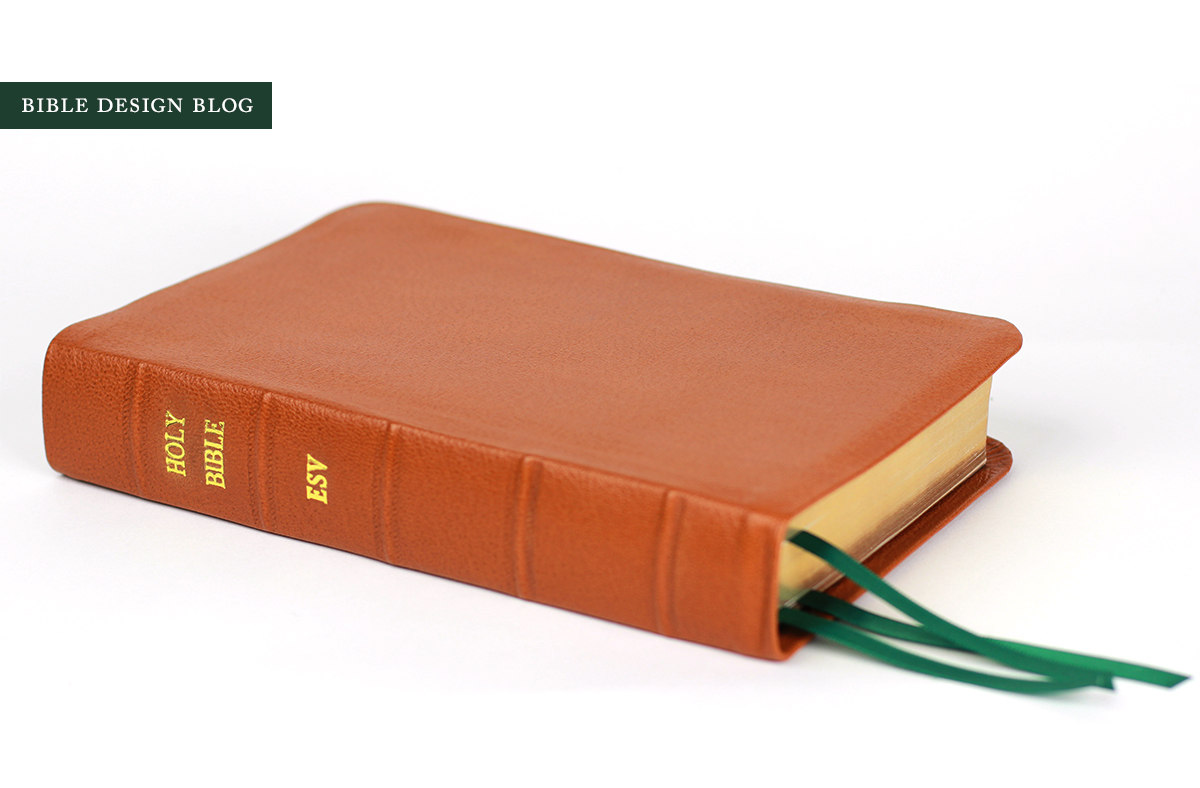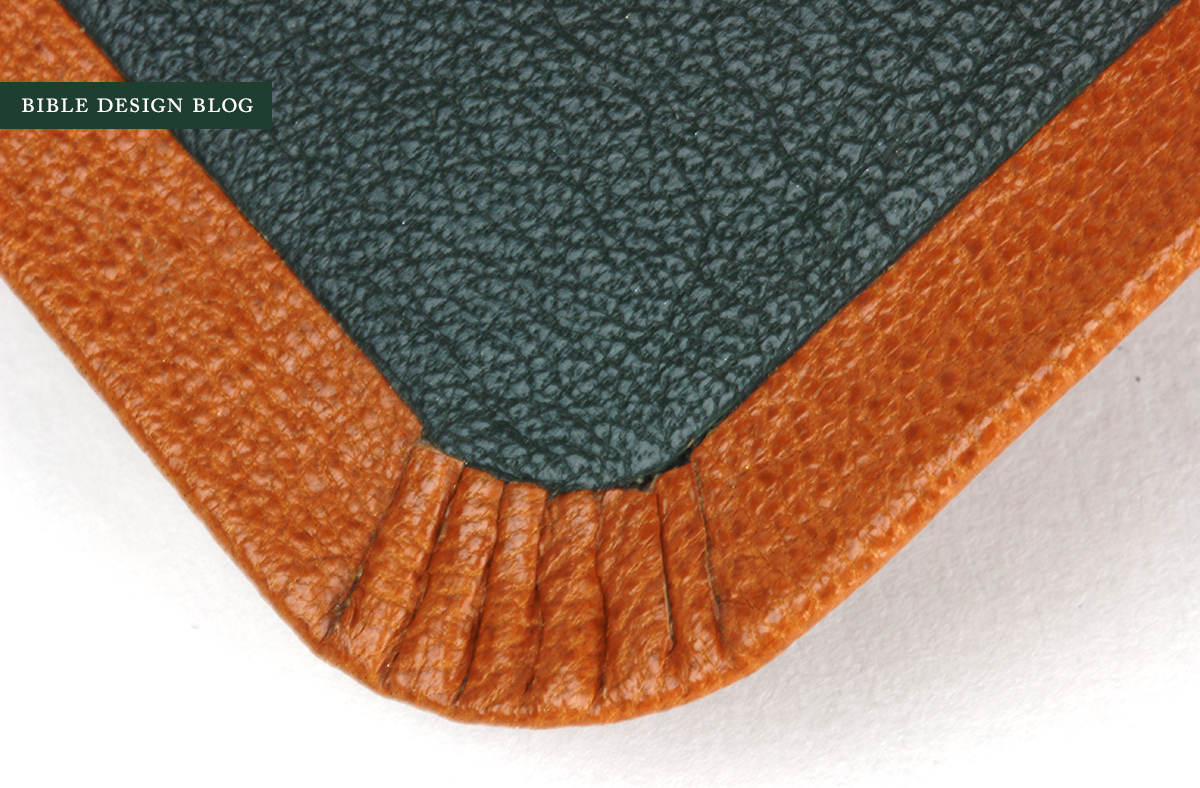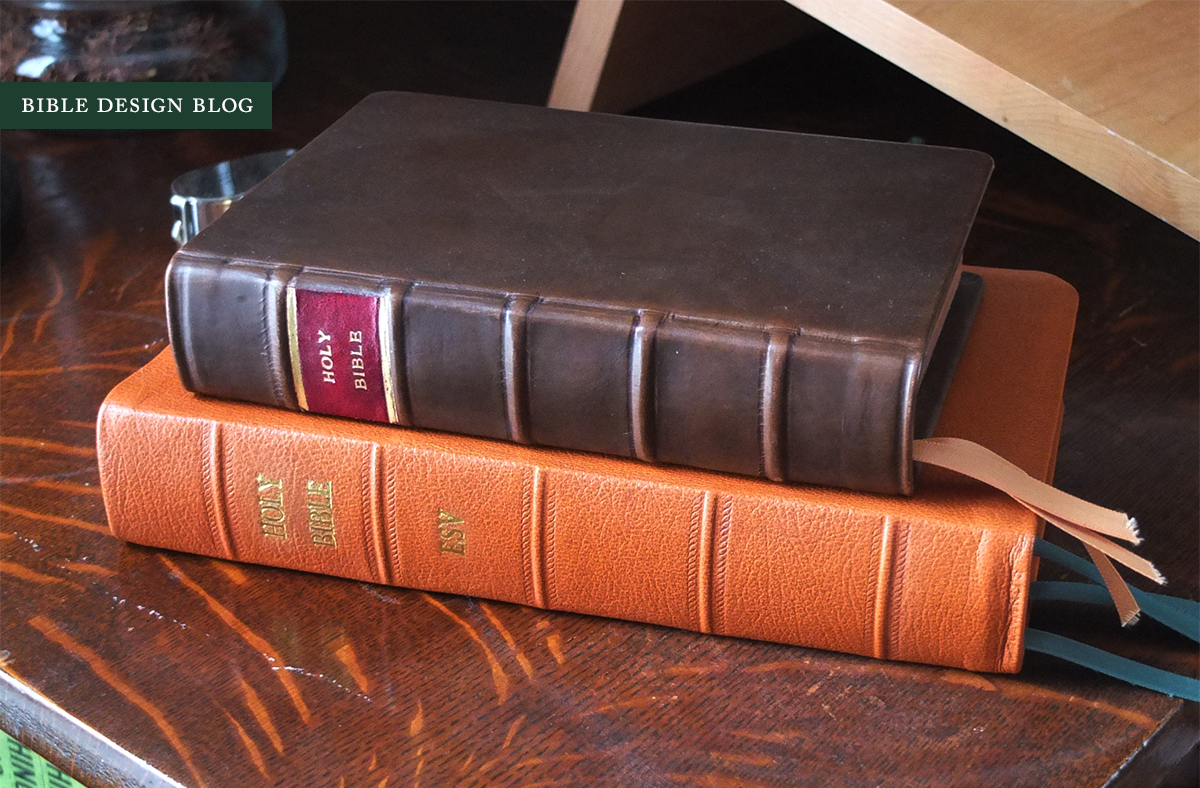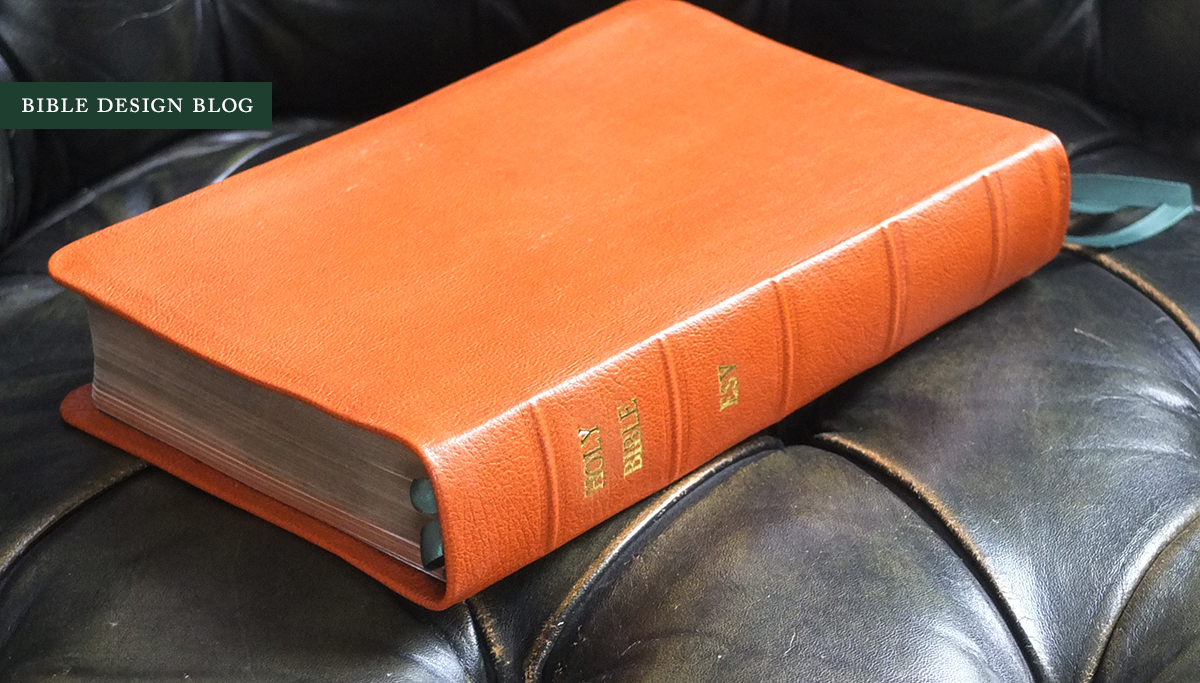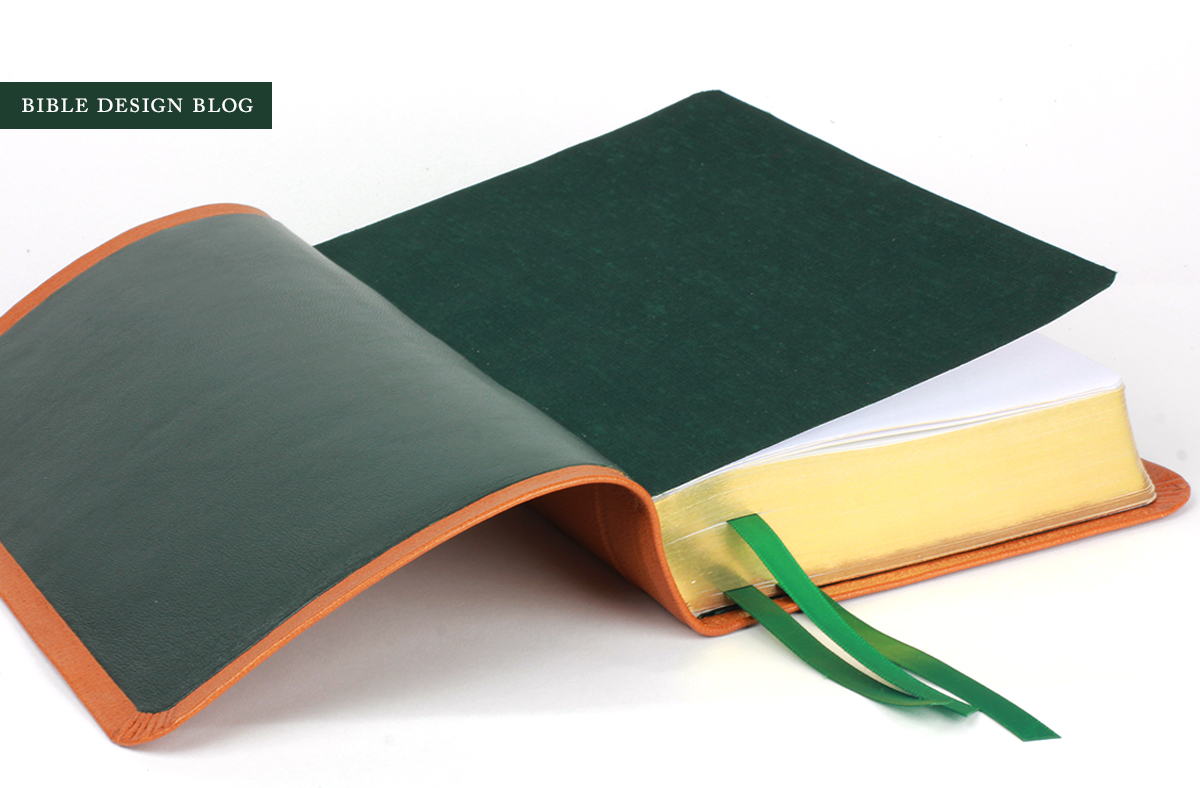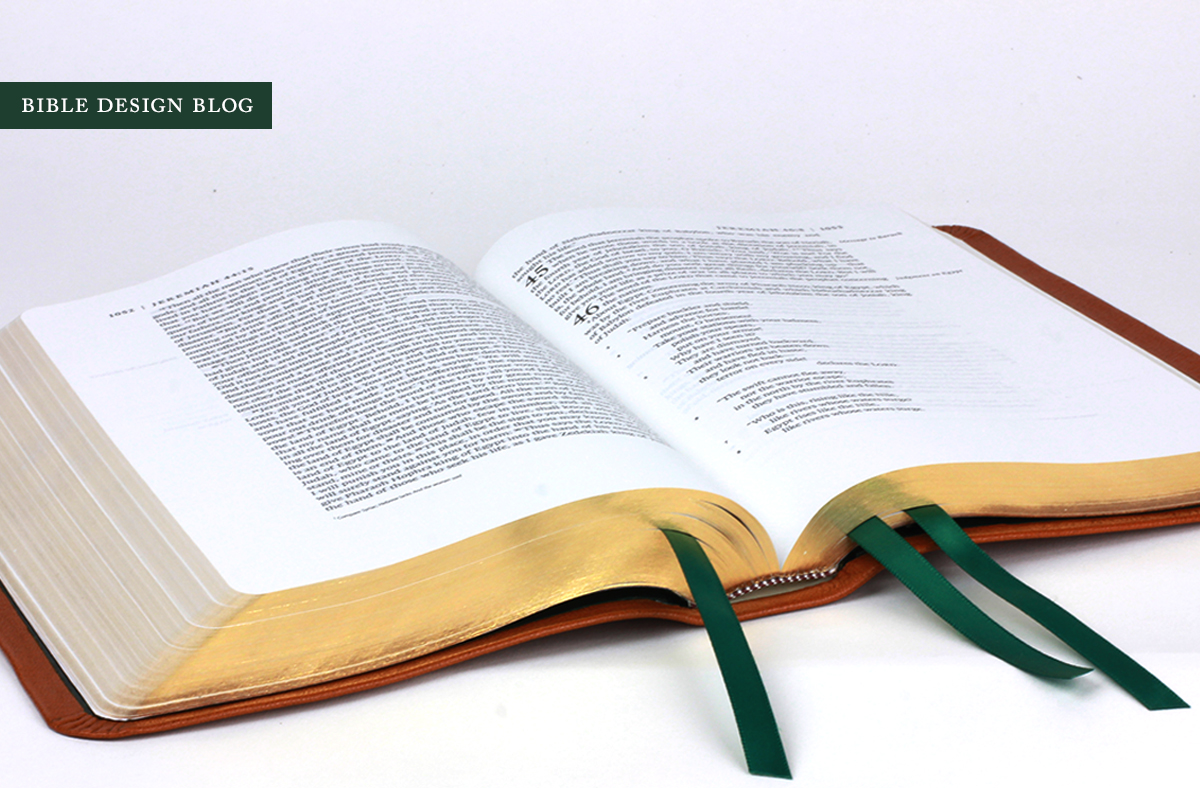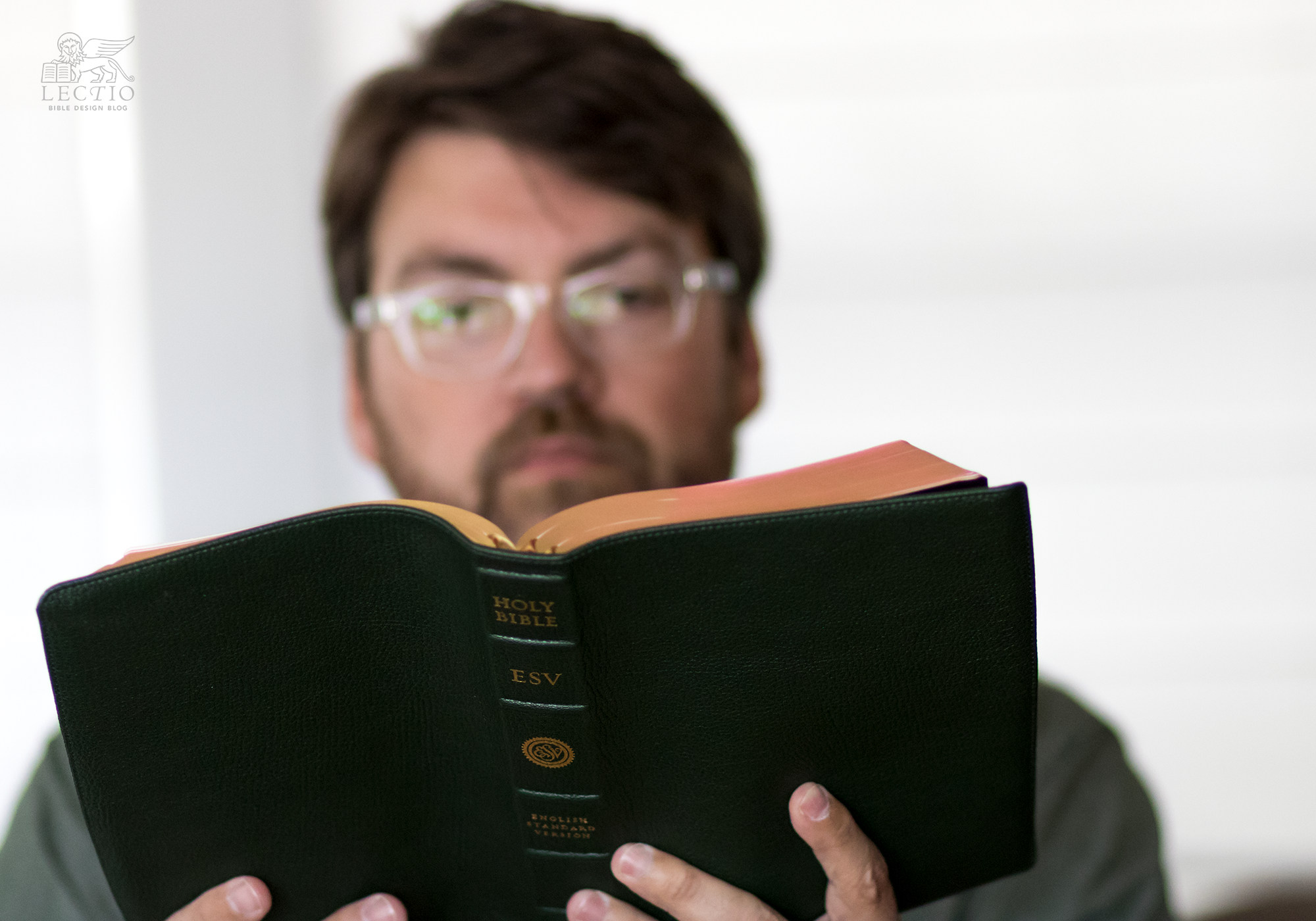Leonard's Leather-Lined Rebind of Crossway Legacy ESV
When it comes to having a beloved Bible rebound, I have always urged readers to have realistic expectations. There are a lot of bookbinders out there who work on Bibles, and some of them are quite good, but the end result rarely measures up to the fit and finish of high end editions like those of Cambridge or R. L. Allan. That's changing, I am happy to report, and this newly rebound Crossway Legacy ESV from Leonard's Book Restoration is a great example. Frankly, the quality and aesthetics of this rebinding job fill me with hope.
For some time now, customers have been asking Eric Haley and his team to offer leather-lined covers. When I visited Leonard's headquarters last year, the subject must have come up, but we talked about so many things I cannot say for sure. Fast forward to May of this year, and I received an e-mail from Margie Haley, Eric's wife, letting me know that a new series of River Grain goatskin bindings would be available with edge-lined covers using lambskin liners. Would I like a review copy? Oh, yes. I threw out a couple of suggestions for the book block, and chose the color scheme. About a month ago, the rebound Crossway Legacy ESV you see here arrived.
I've always been enamored with British leather goods. One of the classic color combinations for a traditional bridle leather briefcase is a London tan exterior with a green skiver lining. That's the color scheme I asked Leonard's to duplicate.
I have written about several editions rebound by Leonard's, and while they were all impressive, this one strikes me as the best of the lot. Every detail works. First, the book block is one of the Crossway Legacy editions printed in Italy by LEGO, which I have written about here, here, and here. It's a fine text setting printed nicely on good paper, with elegant classical proportions. The Legacy has ... gravitas. More importantly, the Legacy's signatures are sewn together rather than glued, which is essential if you want to have the book block rebound. This particular Legacy began life with a burgundy TruTone cover.
Using this Bible gave me a chance to become reacquainted with the Legacy text setting. I gave away my original review copy, so it's been awhile. The Legacy is so easy on the eyes, great for reading. The paper is reasonably opaque, so I don't struggle with ghosting, and something about those margins makes a difference when you're scanning the columns. I also had the opportunity to use this copy in the pulpit, where it really shined: opening flat and having text large enough to be read at a glance are big advantages.
Couple this book block with a limp edge-lined binding and the result is magical. The limp goatskin cover is backed by equally pliable lambskin. Together they offer no resistance to the weight of the book block, which means the book opens flat like a champ and feels liquid in your hands. This kind of binding is definitely not for people who like a firm, supportive cover. It begs to lay open, to slouch back, to be folded in half.
On the spec sheet from Leonard's, the cover is listed as British tan genuine River Grain goatskin, and the lining is forest lambskin. The cover extends about 3/8" past the edge of the book block and has raised ribs on the spine. If you look closely at the ribs, you'll see blind tooling on either side, which adds a nice touch. The spine imprint is in gold apart from the word LEONARD'S blind-stamped at the bottom (this is hidden by the wrinkle in the skin, so it's very subtle).
One of the things you'll notice in the photos is that, while the cover is backed with lambskin, the interior hinge is made from the dark green Japanese book cloth that faces the lamb. I know that the strength of that hinge was one of the factors that prevented Leonard's from offering leather linings in the past -- Eric Haley had concerns about the longevity of a thin lining-leather hinge. This method feels sturdy yet sleek. I haven't had enough time with the Bible to comment on the resilience of the cover construction, but judging from appearances and feel, I'm guessing it will go the distance.
The base price of the rebinding project was $175, and the Japanese book cloth added another $15. Factor in the cost of shipping and the original price of the TruTone Legacy, and you're looking at something like $230, which certainly isn't cheap. If you're spending this kind of money, you want to know that the end result will be worth it. In this case, I think the answer is yes. Once you find the book block you can commit to for life, a cover like this makes a worthy investment.
To help you navigate the options, Leonard's has created a step-by-step guide to the process, which you can find here: "Build Your Own Leather-Lined Goatskin Bible." You begin by choosing from six different shades of goatskin -- Black, British Tan, Navy, Crimson, Mocha, Forest -- and specifying how much overlap (or "yapp") you want on the cover: 1/4", 3/8", or 1/2". Lambskin linings are available in Forest, Burgundy, Navy, Dark Brown, Black, and Beige. Then you decide whether you want the inner binding to be leatherette (burgundy, brown, or black) or moire book cloth (black, brown, burgundy, beige). My Bible uses forest green Japanese book cloth, which is also available. To finish, you select the width and color of your ribbons.
For best results, I suggest that you match your lambskin and book cloth (or leatherette) as closely as possible. You don't want to open your Bible and see a two-tone effect. The more conservative among you should probably match the cover and lining, too. Black-on-black is the classic safe option, but if your cover isn't black, please don't go with a black lining. If you're ready for a tasteful adventure, keep in mind that my green lining will contrast nicely with covers in black, brown, and tan -- the British briefcase makers have proven this for ages.
Since I received this Bible in early September, I keep wanting to heap praise on it for one simple reason: this is how I imagined my first rebinding project turning out all those years ago. If this binding had been an option then, I wouldn't have spent the last decade or so trying to lower expectations and head off the inevitable disappointment that comes when you've waited a few months for your Bible to be rebound and it comes back looking, well, rough.
If this polished result is what we have to look forward to, the future looks good for rebinding.
J. Mark Bertrand is a novelist and pastor whose writing on Bible design has helped spark a publishing revolution. Mark is the author of Rethinking Worldview: Learning to Think, Live, and Speak in This World (Crossway, 2007), as well as the novels Back on Murder, Pattern of Wounds, and Nothing to Hide—described as a “series worth getting attached to” (Christianity Today) by “a major crime fiction talent” (Weekly Standard) in the vein of Michael Connelly, Ian Rankin, and Henning Mankell.
Mark has a BA in English Literature from Union University, an MFA in Creative Writing from the University of Houston, and an M.Div. from Heidelberg Theological Seminary. Through his influential Bible Design Blog, Mark has championed a new generation of readable Bibles. He is a founding member of the steering committee of the Society of Bible Craftsmanship, and chairs the Society’s Award Committee. His work was featured in the November 2021 issue of FaithLife’s Bible Study Magazine.
Mark also serves on the board of Worldview Academy, where he has been a member of the faculty of theology since 2003. Since 2017, he has been an ordained teaching elder in the Presbyterian Church in America. He and his wife Laurie life in Sioux Falls, South Dakota.

